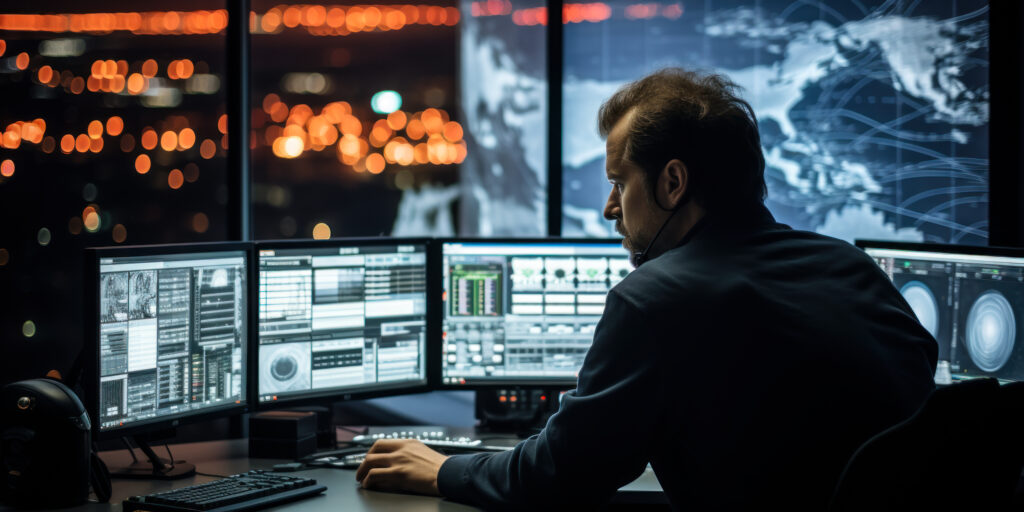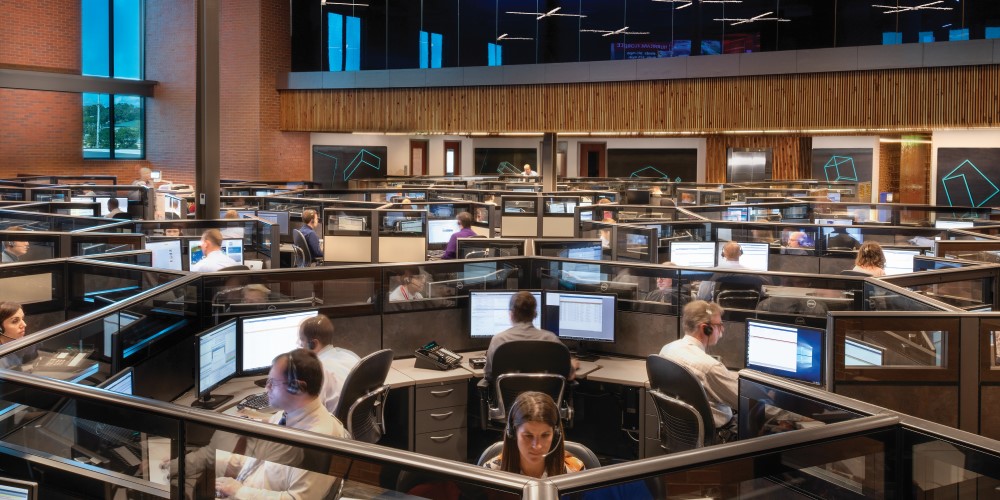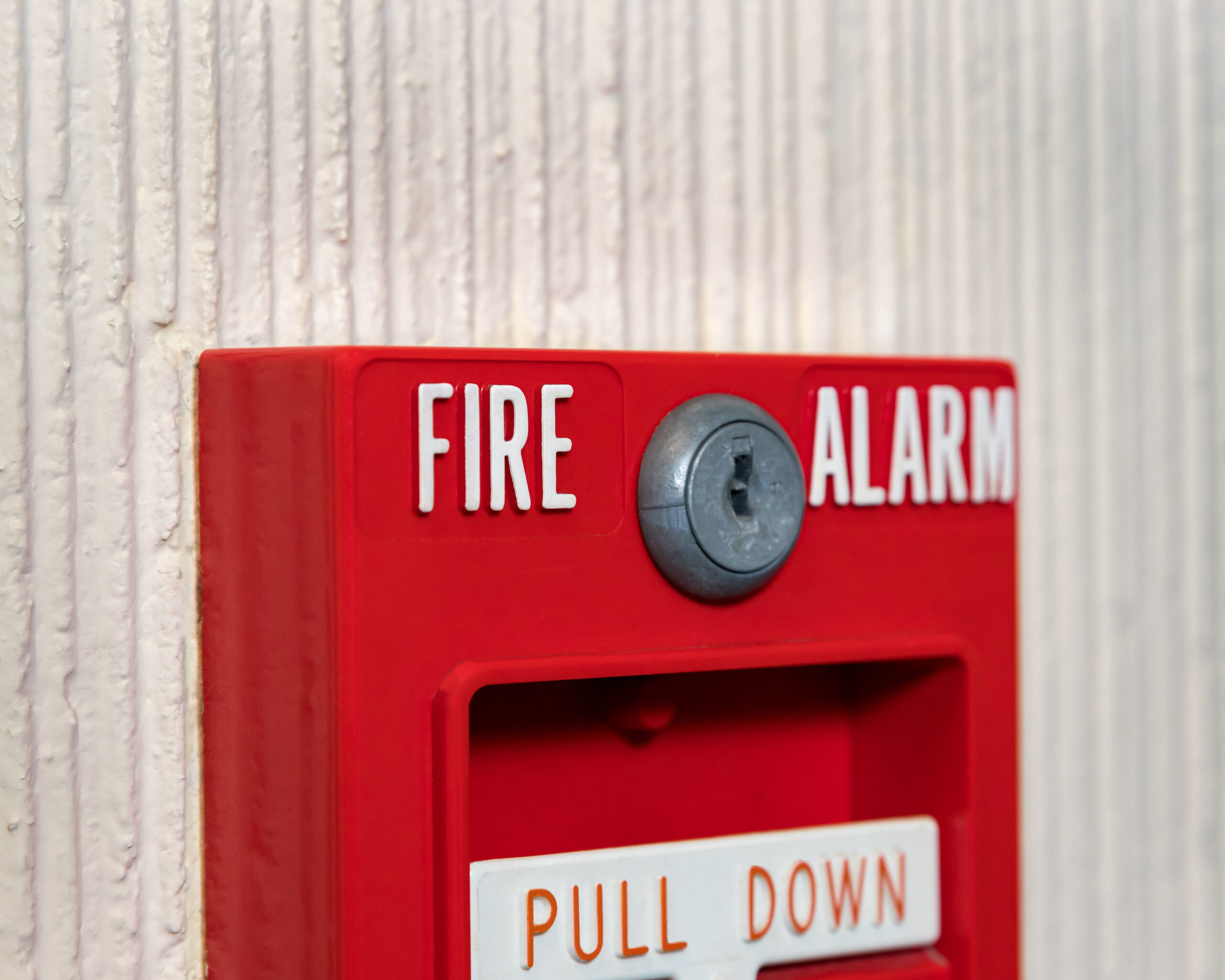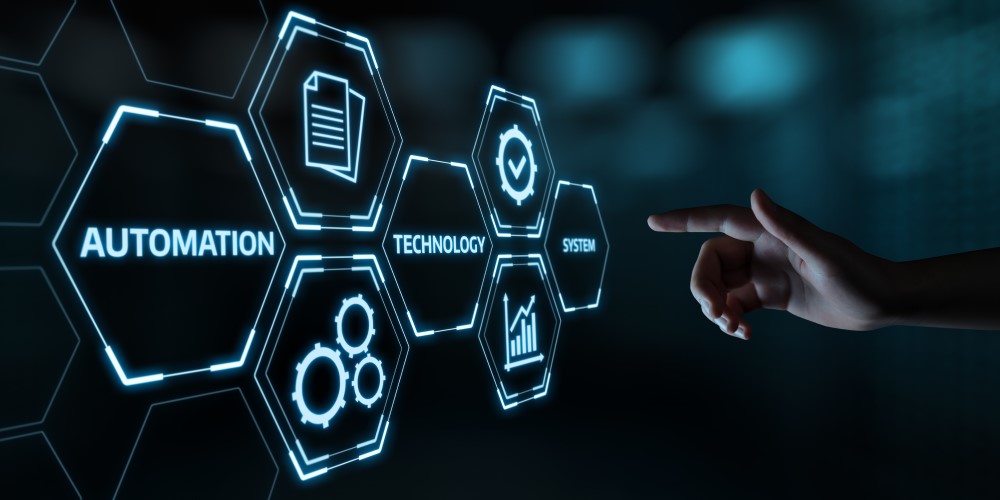3.22.24 – Security Sales & Integration

Central station monitoring guide includes comprehensive looks at fire protection systems, alarm systems, campus dispatch and more.
We here at Security Sales & Integration have long understood the importance of central station monitoring — not just writing about it ourselves but also celebrating those companies that have excelled in the space.
That’s why we joined forced with The Monitoring Association in 2018 to establish the TMA/SSI Monitoring Technology Marvel Award. The mission of the Marvel program is “to recognize monitoring centers that create and/or use cutting-edge technology and to raise awareness of these new technologies,” according to the association’s nomination materials.
We’ll find out the winner of the 2024 Monitoring Technology Marvel Award on April 18. They will, of course, join two-time winner National Monitoring Center, as well as one-time honorees ADT, Affiliated Monitoring, CPI Security and USA Central Station.
What follows is a comprehensive guide to central monitoring stations, touching on all the important aspects of the sector and (we hope) teaching you something about that segment of the physical security industry that you didn’t already know.
Whether you’re a newbie in the security space or a veteran of several decades, we hope you’ll scroll through this guide and share it with your peers, partners and colleagues.
This guide will cover the following topics:
- Central Station Monitoring: What Is it?
- Switching Central Monitoring Stations
- Central Station False Alarms
- Home Alarm Monitoring
- Central Station Monitoring as a Service
- Central Monitoring Stations and COVID-19
- Standards at Central Monitoring Stations
- Central Station Recurring Revenue
- Panic Alarms and Rapid Response
- Fire Protection Systems: What are They?
- Fire Protection Systems: Exemptions and Non-Exemptions
- Global Fire Automation Market
- Alarm System Oversight
- AI and Advanced Fire Protection Systems
- Fire Alarm Monitoring Outages
- Fire Protection System Suppliers
- Central Station Indemnity Issues
- Automated Alarm Monitoring Capabilities
- Biggest (and Cheapest) Brands in Alarm Monitoring
- Additional Central Station Monitoring Resources
Central Station Monitoring: What Is it?
Central station monitoring, according to Avantguard, a Becklar company, refers to “a central station, monitoring center, or alarm monitoring station [that] functions as a support system for critical event management devices, such as security alarm panels, gas and temperature gauges, PERS devices, crash detection devices, integrated video systems, and even mobile applications.”
Monitoring companies provide services that “are often called wholesale alarm monitoring or third-party monitoring. These are essential services for companies who want to build a recurring monthly revenue stream, and for those who need the status of a life or property maintained in a desired state.”

Adobe Stock image by Bartek
Switching Central Monitoring Stations
SSI’s “Legal Briefing” columnist, Ken Kirschenbaum, recently looked at some of the things you need to consider when switching your central monitoring station. These include all the critical provisions that should be incorporated as part of your dealer agreement. He’s also compared choosing a central monitoring station to picking a life partner, saying the contract you sign is akin to walking down the aisle.
Central Station False Alarms
False alarms in central station alarm monitoring represent a persistent problem. Six executives across the industry shared their insights on how their companies are utilizing advanced technology to mitigate false alarms.
“Between Us Pros” columnist Scott Goldfine looked at how remote guarding can help to reduce the number of false alarms, while Morgan Hertel wrote about the real cost of false alarms for subscribers and alarm monitoring services.
That’s especially important based on Parks Associates research that shows half of security system owners say they deal with too many false alarms, and more than 60% of respondents say their systems triggered at least one false alarm in the past 12 months.
Bob Dolph, our former “Tech Talk” columnist, says it’s more important what happens at a central station after a false alarm than the fact they happen at all. To that end, guest columnist Adam Brandfass says security technology partners are working with central monitoring stations to reduce false alarms.
Home Alarm Monitoring
Our Security Science columnist, Jeff Zwirn, took a closer look at some of the challenges when central station operators are using home alarm monitoring protocols, including whether that post-pandemic arrangement means increased alarm contractor liability. Kirschenbaum took his own look at this scenario in a point-counterpoint response to Zwirn’s “explosive article.”

Adobe Stock image by Syda Productions
Central Station Monitoring as a Service
Like with most technology, central stations are becoming commoditized in some circles, leading to the advent of central station monitoring as a service. Our Monitoring Matters columnist, Peter Giacalone, authored a comprehensive guide to how it all works and why you should explore it.
For more content that Giacalone has authored for Security Sales & Integration, check out this selection of some of his best “Monitoring Matters” articles:
Monitoring Matters: Wireless Video Isn’t Only for Residential Uses Anymore
Monitoring Matters: PERS and Lifestyle Management Opportunities
Sensing a Disruption in the Home
Are You a True Technology Provider?
Why It’s Time to Consider Offering Presence Detection
Why Integrators Must Ditch the Silo Approach and Sell Whole ‘Ecosystems’
Remote Video: Understanding Its True Value
Central Monitoring Stations and COVID-19
The COVID-19 pandemic has dissipated significantly in the past few years, but its lessons and the changes it necessitated for central monitoring stations — and all industries, for that matter — are no less important than they were when SSI brought together four TMA members for a business roundtable discussion that includes talk about how internal and external people skills, grit and adaptability have never been more critical.
Third-party wholesale monitored security systems providers told SSI how they were able to make their way through the pandemic, even using it to tack on new services and other value-add propositions to the monitoring services that remain at the core of their businesses.
Standards at Central Monitoring Stations
Morgan Hertel, vice president of technology and innovation at Rapid Response Monitoring, explored how standards have necessarily changed at central monitoring stations in the wake of the pandemic. This isn’t the first time that central alarm monitoring services have had to adjust.
Meanwhile, Sarah Salazar, account manager at United Central Control, says it’s crucial for central monitoring stations to have multiple communication paths programmed into them to ensure their constant viability, no matter the conditions.

Image courtesy of Rapid Response Monitoring
Central Station Recurring Revenue
Security system integrators have been building up ways to create recurring monthly revenue (RMR) opportunities for themselves in central stations in an effort to remain sustainable and expand beyond just responding to every alarm that comes through to its operators.
Panic Alarms and Rapid Response
Central monitoring station operators are now fielding more calls than ever. In particular, they are responding to a growing number of panic alarms related to active shooter situations.
For a sampling of SSI coverage related to active shooters and campus safety, check out this curated selection of stories, many of which were adopted from our sister site, CampusSafety.com:
Campus Safety Survey Finds Increased Emergency Notification Systems Use
Michigan State University Touts Security Upgrades One Year After Mass Shooting
Baylor University Launches Mobile Credentials for Enhanced Campus Experience
How to Choose the Right Classroom Lockdown Technology for Your School
Classroom Safety is About More Than Just Securing the Door
Connectivity Standards Alliance Announces Mobile Device and Wearables Effort
The Vital Role of Detection Technology and Security Integrators in School Safety
ESSER Funds Can Help Schools Pay for Critical Access Control Upgrades
ASSA ABLOY Integrates PASS K-12 Safety Guidelines Into 360° School Virtual Tour
New York Ends School Biometrics Ban — With One Exception
Prioritizing K-12 School Safety and Security During Safe Schools Week
Fire Protection Systems: What are They?
The National Fire Protection Association (NFPA) recognizes fire alarm systems “a crucial part of the fire and life safety of a building and its occupants,” according to a page on its website by technical services engineer Shawn Mahoney. The page serves as a visual guide dedicated to defining and explaining the components.
The so-called “brain of the fire alarm system” is the fire alarm control unit, which, Mahoney says, “monitor[s] all the inputs and control[s] all the outputs. Some may also refer to this as a fire alarm control panel or fire alarm panel.”
“The different types of conditions that can be seen at the fire alarm control unit are Alarm, Supervisory and Trouble,” he writes. “These conditions can also result in a signal being sent to the supervising station.”
The initiation of a fire alarm system includes all the devices and circuits that send a signal to a fire alarm to provide the status of a protected space or the existence of a fire, says Mahoney. Initiation devices include, but are not limited to heat detectors, smoke detectors, water flow switches, manually actuated devices and pressure switches. Depending on the system, the signal from an initiating device can create an alarm condition or a supervisory condition.
It is possible to utilize a fire alarm system to monitor the condition of other systems, processes or equipment that are related to the building’s fire and life safety, while also being crucial to the mission of the building, Mahoney writes.
Supervision can include, but is not limited to, valves on fire protection systems, other fire protection systems such as kitchen hood suppression systems, valve room or storage tank temperatures and fire pump condition issues with these systems would provide a signal to the fire alarm control unit via an initiating device circuit (IDC) for conventional systems or a signaling line circuit (SLC) for addressable systems and would create a supervisory condition at the fire alarm control unit.
Primary power to the fire alarm system can be provided by the electric utility, an engine-driven generator, an energy storage system or a cogeneration system. Secondary power to the fire alarm system can be provided via properly sized batteries, batteries and a standby generator, or an Energy Storage System.
A fire alarm system is able to provide notification to alert the occupants and, in some cases, onsite emergency forces. Notification is provided via visible and audible notification appliances. The visible notification is typically provided via strobes, and audible notification is provided by either speakers, which can provide different tones and voice signals, or horns, which can only provide a single tone. The fire alarm control unit provides the signal to the notification appliances via a notification appliance circuit (NAC).
The fire alarm control unit can be used to control the function of other systems such as elevator recall, door closers and smoke control systems. The most common way that the fire alarm can do this is through the use of a control circuit and a relay.
Supervising stations monitor the premises and include central station service, proprietary supervising stations and remote supervising stations. The communication method to those supervising stations is done with the communication methods shown below. Based on the types of signals received from the fire alarm control unit and the type of supervision station, the supervising station may alert the emergency forces or dispatch a runner service to fix a trouble to supervisory condition.

Adobe Stock image by JJ Gouin.
Fire Protection Systems: Exemptions and Non-Exemptions
Capitol Hill is equipped with some of the finest and most sophisticated fire protection systems and fire protection sprinkler systems, as well as advanced fire protection systems. But that doesn’t mean they are always treated with respect. Fireside Chat columnist Shane Clary notes Congress is not exempt from false fire alarm activations–or the penalties that they carry.
Global Fire Automation Market
According to Adroit Market Research, the global fire automation market is expected to reach $130 billion by 2030, with a compound annual growth rate (CAGR) of 6.7% from 2021 to 2030. That speaks to the growth potential in the fire protection system space.
Alarm System Oversight
Richard Kleinman, former president of AFA Protective Systems, wondered if third-party oversight of fire alarms through central stations should be the rule. He notes that transition is well underway.

Adobe Stock image by sittinan
AI and Advanced Fire Protection Systems
Theresa Grunewald, the global business development manager at Bosch Security and Safety Systems, explored how artificial intelligence algorithms embedded in video-based technology has revolutionized safety monitoring, so no risk of fire or combustion goes undetected — in all conditions, 24/7.
Fire Alarm Monitoring Outages
Morgan Hertel looked at how internet providers, 911 centers and other services that offer fire alarm monitoring go through occasional outages. Central monitoring stations are built on a foundation that’s considered virtually indestructible. Peter Giacalone says diversity and redundancy is equally important in the viability of central monitoring stations.
List of Fire Protection System Suppliers
Central Station Indemnity Issues
Your central station operator might make a mistake on a signal, fail to dispatch or delay the dispatch, talk too much or do something else that the customer (or its insurance carrier) thinks contributed to the loss. Then, you and the central station are likely to be sued, says alarm attorney Ken Kirschenbaum.
That’s why it’s important for central monitoring stations to ensure they have indemnified their alarm monitoring services not only against mistakes that you may have made in installation or programming but also mistakes that the central station may make when responding to alarm signals.

Adobe Stock image by Sikov
Automated Alarm Monitoring Capabilities
Sarah Salazar took a deeper look at the benefits of utilizing your central monitoring station’s automated alarm monitoring capabilities.
Peter Giacalone, meanwhile, explored how dealers can maximize their investment in monitored alarm systems by understanding the tools and applications available to them, allowing these subscribers to take a greater control of their part in the security chain.
Biggest (and Cheapest) Brands in Alarm Monitoring
You’re probably wondering which brands stand out in the world of alarm monitoring. Luckily, we’ve done the work, so you don’t have to! Here’s a list of the biggest names in the market, followed by a compilation of some of the most cost-effective brands in the space.
Residential Alarm Monitoring Brands
These companies are also well represented when you look at the top commercial alarm monitoring companies doing business today. They’re also included on the list of best-bang-for-the-buck alarm monitoring systems.
Commercial Alarm Monitoring Brands
Additional Central Station Monitoring Resources
Tech Marvel Runner-Up Edgeworth Security Uses Proactive Approach
Tech Marvel Runner-Up Statewide Central Station Adds AI to Video Verification
